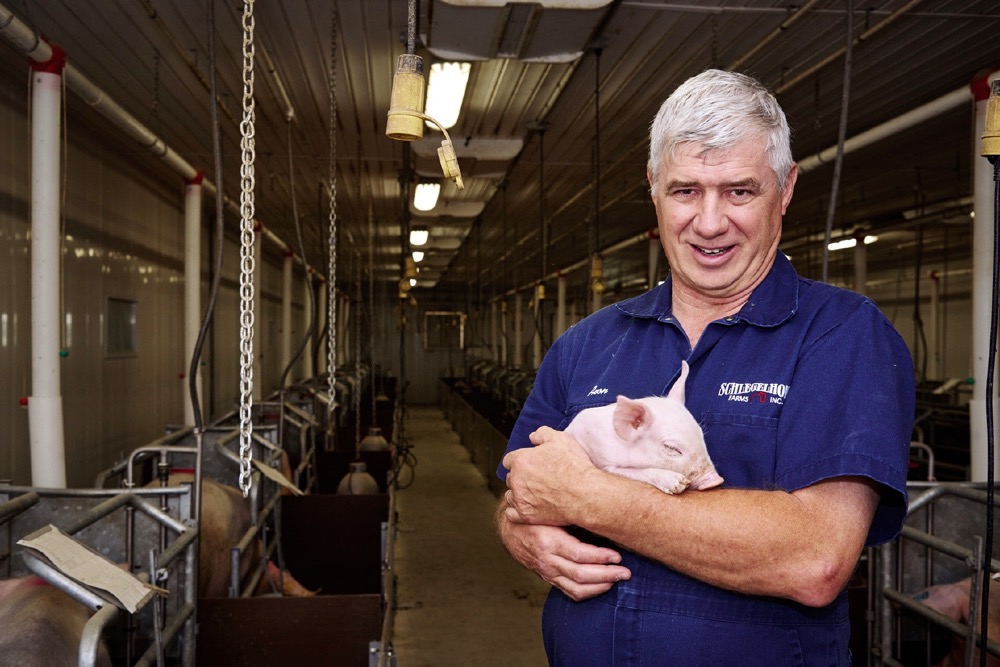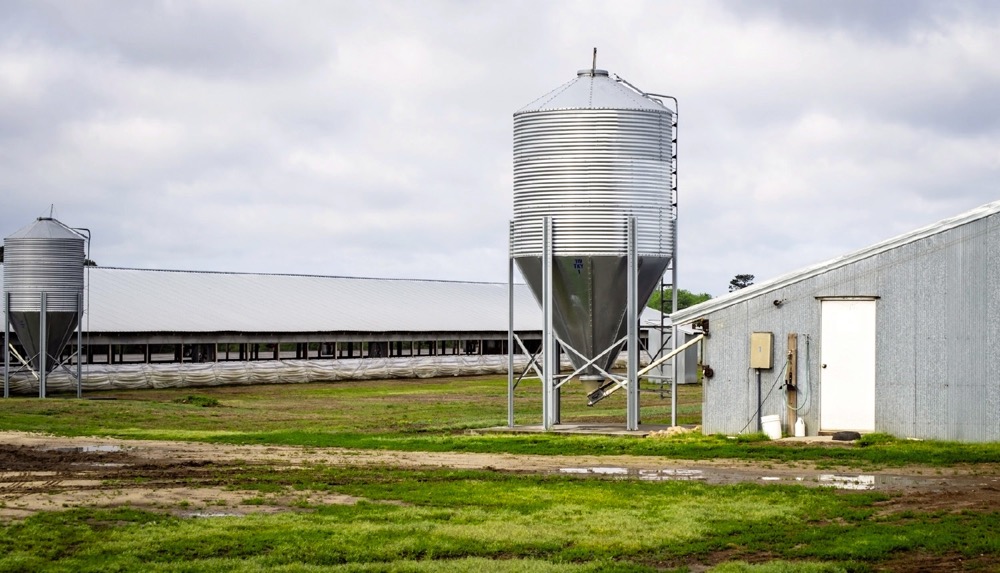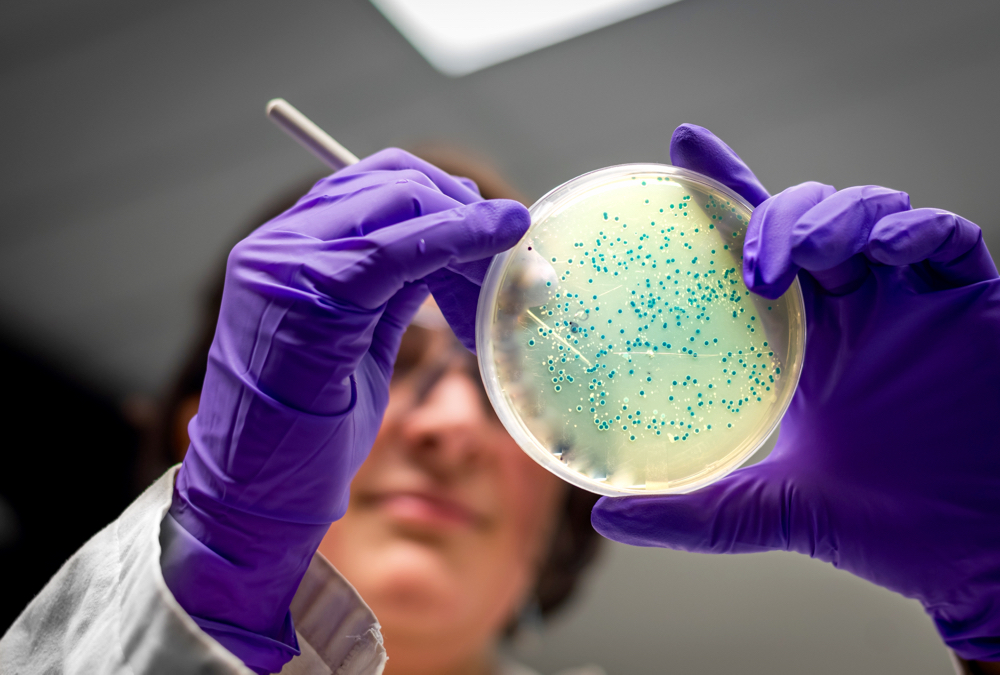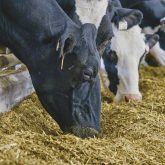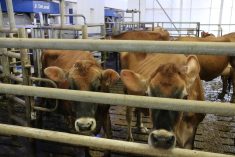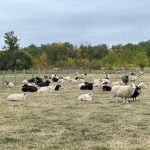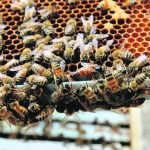Ontario has become an experienced producer of large-scale insect- and disease-monitoring systems to reduce farmer risk.
Producer-driven data systems will likely continue to grow with the potential to give Ontario a competitive advantage. But what are the next steps?
Why it matters: Aggregate data networks are already used to monitor and prevent the spread of pests in field crops, as well as disease in livestock. Some see the role of farm data as expanding from commodity-specific issues to more open data systems that can improve emergency response, farmer accessibility to data, and agricultural policy.
Read Also

Dissolving eartags could make pig traceability easier
A dissolving eartag for market hogs, called Clean Trace could reduce processing challenges and enable more individual management of pigs.
Clare Schlegel, a pig farmer from Perth County and board member for Swine Health Ontario, says reporting programs have been employed now over several disease outbreaks to prevent, track, and respond to swine diseases such as porcine reproductive and respiratory syndrome (PRRS) and porcine epidemic diarrhea (PED).
Much of this is done through voluntary producer reporting as part of the Ontario Area Regional Control and Elimination (ARC&E) program. In this system, farmers sign up and the health status of their animals is tracked with the goal of eliminating diseases.
Ontario was lauded by other jurisdictions in North America for its ability to control the spread of PED, a virus that causes diarrhea among most areas of sow production and high rates of mortality among piglets.
Quick-responding data systems and the willingness of producers and veterinarians to share information meant less impact from the disease in Ontario than in the U.S.
Co-operation and information sharing made Ontario a leader in swine disease elimination, through the ARC&E programs where farmers and their service providers worked together to eliminate diseases first in neighbourhoods, then regions and eventually the province.
Preventing pathogens
It’s not just livestock farmers in Ontario who have made use of producer-driven data to manage risk to their farms. Projects like the now eight-year-old Western Bean Cutworm trap network exemplify how pest-prevention data can work. This crowd-sourced project aggregates cutworm numbers across Ontario and beyond. Data generated through the network are then applied to digital tools that can warn farmers of imminent cutworm pressures.
The network’s online presence is at the WBC Trap Network website.
Schlegel, a longtime participant in swine health disease monitoring systems, says the information sharing opportunities provided by the program allow farmers and other industry professionals to identify where disease originates, and apply controls.
If PRRS or PED is discovered on a farm, for example, participants in the ARC&E program are sent a notice. Those producers can then enact more stringent biosecurity protocols, talk to employees about the situation, help transporters ensure trucks visiting contaminated sites are thoroughly cleaned, and more. This system, says Schlegel, has allowed the Ontario hog industry to limit the spread of diseases such as PED, and stamp it out wherever possible.
Schlegel also says the program will soon be upgraded to incorporate transportation data. More specifically, digital records of every animal will be kept as they move between farms and to the processing plants. Health data for those animals can then be layered on top.
“This is one of the few systems, where if you talk about it for an hour, virtually everyone sees the benefit,” says Schlegel. “It’s not government regulated — this is farmer driven.”
Data segmentation reduces effectiveness
Reporting programs like those described above are powerful tools. However, the overall on-farm impact of aggregate data is highly segmented in its usefulness, says Karen Hand, researcher in applied biostatistics and director of research data strategy for the University of Guelph’s Food from Thought program, an initiative focused on using Big Data to benefit food production and biodiversity.
Hand says data streams exist on many levels, and are held by a multitude of sources — from in-tractor precision application programs to individual agronomy companies and commodity monitoring systems like the Western Bean Cutworm network.
Currently, there is no one location where all the information can be combined and analyzed to determine a farm’s infection risk. Looking at each data stream individually, she says, is not conducive to delivering farmers and veterinarians useful information in real-time.
If such a system did exist, farmers could then be notified concerning their quantified risk and suggested next steps.
“If we had the capability to predict risk in real time we could get the resources needed to critical areas,” says Hand. “We need pipelines in between.”

Central platform already developed
Hand says synthesizing all agricultural data streams requires collaboration from government, academia, and industry. Work done by agricultural groups and institutions, led in part by Ontario Agri-Food Technologies, has already produced and tested a made-in-Canada “IT architecture” that could begin absorbing data streams from all Canadian agriculture sectors.
The system was created after consulting with industry on what data streams already exist in different sectors.
According to Hand, the platform was tested last year. However, long-term government support, not support on a project-to-project basis, is required for the system to be sustainable.
“This type of system has the potential to move us to a proactive as opposed to a reactive model, where farmers that are at high risk will have access to products and support and farmers at low risk do not have to purchase or apply products,” she says.
Hand also believes synthesizing multiple data streams into one accessible Canadian system could prove useful for policymakers. She adds the next generation of farmers are tech-savvy and will need access to data more than ever.
“Can we use it for regulatory purposes to reduce on-farm paperwork? We’re increasingly asking farmers to do more paperwork but a lot of that data already exists,” Hand says.
The right to your own data
Interconnected agricultural data systems could also be used to prove the sustainability of Canadian agriculture both domestically and abroad. However, a lot of farm-generated data is currently held by private companies and organizations both in and outside the country.
This raises sovereignty questions as data generated on Canadian farms only becomes accessible to those holding the data. Sometimes this isn’t an issue. Hand says most companies are open and willing to share, although there are exceptions.
“We need data to support sustainability,” says Hand. “We know Canadian farmers follow best management practices, but how do we prove that? It’s really going to come down to proof.”
Trade aside, a more nationalized data system could have practical implications for day-to-day farm operations.
“If you’re a livestock producer, you might want data off your robot that your nutritionist can use, but you can’t get it,” says Hand. “Can we assure producers they know where their data goes and that they have the right to that data?
“We like to say (farmers) need it in their own bank accounts.”


